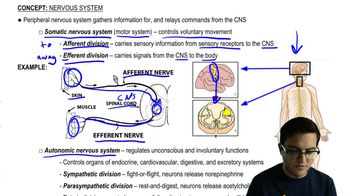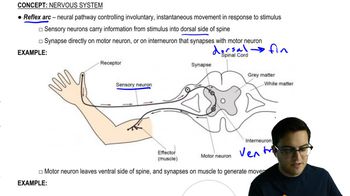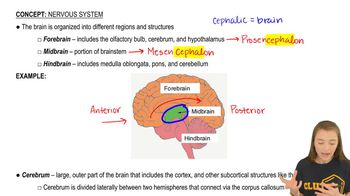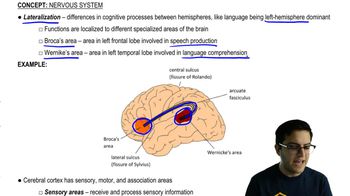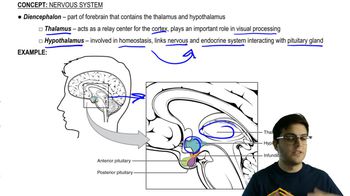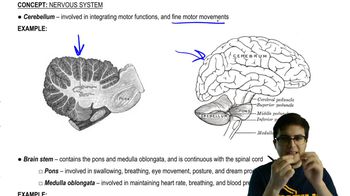45. Nervous System
Central and Peripheral Nervous System
Learn with other creators
Practice this topic
- Multiple ChoiceWhich would be present in an animal with a nerve net?1141views
- Multiple ChoiceWhat is the difference between a neuron and a nerve?4317views
- Multiple ChoiceA neuron that transmits an impulse to the central nervous system after the neuron is stimulated by the environment is called a(n) __________.1098views
- Multiple ChoiceWhich of the following is specific to the central nervous system?1346views
- Textbook Question
Activation of the parasympathetic branch of the autonomic nervous system
a. Increases heart rate
b. Enhances digestion
c. Triggers release of epinephrine
d. Causes conversion of glycogen to glucose
1741views - Textbook Question
Which of the following structures or regions is incorrectly paired with its function?
a. Limbic system—motor control of speech
b. Medulla oblongata—homeostatic control
c. Cerebellum—coordination of movement and balance
d. Amygdala—emotional memory
1382views - Textbook Question
Patients with damage to Wernicke's area have difficulty
a. Coordinating limb movement
b. Generating speech
c. Recognizing faces
d. Understanding language
1084views - Textbook Question
Fill in the blanks to match some brain structures with their associated functions.
a. If the ___________ is severed, the right and left cerebral hemispheres cannot communicate.
b. The ___________ system helps store emotional memories.
c. Accounting for most of the weight of your brain is the highly folded ___________ ; it is the outer region of the ___________ .
d. The ___________ is responsible for hand-eye coordination.
e. The ___________ contains a cluster of neurons that function as the biological clock.
1908views


